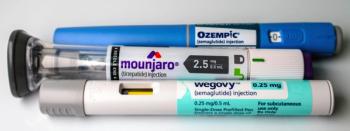
New Study Seeks to Overcome Hurdles of Smart Lenses for Diabetes Testing
A new study using “next generation” materials could offer solutions to the problems that have delayed smart lenses for blood glucose testing in diabetes care.
A new study using “next generation” materials could offer solutions to the problems that have delayed smart lenses for blood glucose testing in diabetes care.
Because blood sugar can be measured in tears, several studies have looked at using contact lens sensors—so-called “smart” lenses—to track blood glucose levels. However, as a new study from the Ulsan National Institute of Science and Technology discusses, the materials used in those early ventures had limitations that made the lenses less practical than needed for a commercial product.
In earlier generations of lenses, the electrodes that received the glucose data were opaque and impeded vision—an obvious problem for contact lenses. The lens material was also a form of plastic, and there were complaints that the lenses were too uncomfortable.
Comfort is key, because one of the purposes of smart lenses is to replace the finger stick blood test that people with diabetes must do several times a day. The idea is replace the blood test with a method that is non-invasive and less painful; the lens would feed glucose data from a sensor to a wireless antenna without the patient feeling a thing.
Researchers in the new study, reported in Nature Communications, are getting close to their goal. They have used transparent, flexible materials—graphene sheets and metal nanowires. They tested the new lens on live rabbits and noted that the rabbits displayed no unusual behavior while wearing them. According to the article, the team fed the rabbits, and waited for the rise in blood glucose, then measured the rise in the blood glucose fed from the sensor to the antenna. Researchers noted the sensor remained stable during repeated eye blinks.
The system may allow both real-time health monitoring and sharing of health information; the technology is also practical because there is no separate power source, and the system uses a wireless antenna to process data from the sensor.
While the use of smart lenses has been most discussed for blood glucose testing, the research team said the lenses could be used to monitor other health conditions, such as glaucoma.
Reference
Nat Commun
Kim J, Kim M, Lee MS, et al. Wearable smart sensor systems integrated on soft contact lenses for wireless ocular diagnostics [published online April 27, 2017]. . 2017;
doi:10.1038/ncomms14997.
Newsletter
Stay ahead of policy, cost, and value—subscribe to AJMC for expert insights at the intersection of clinical care and health economics.

















































